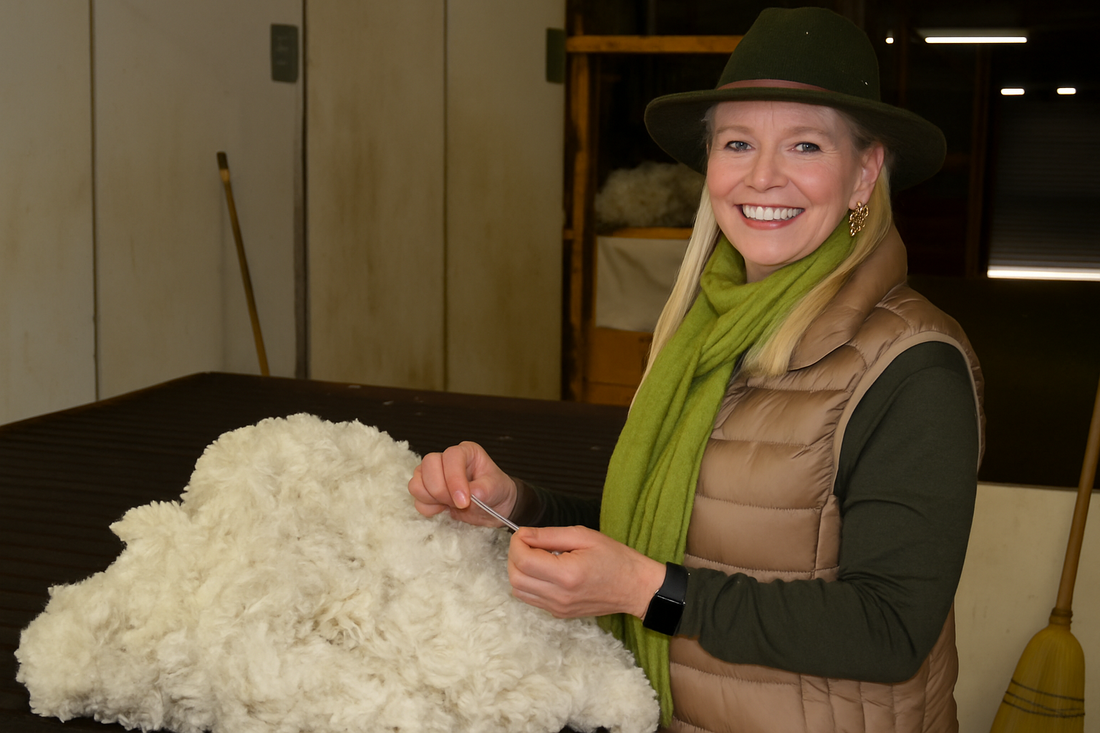If you’ve ever pulled your favourite wool sweater from the drawer only to find it covered in fuzzy little lint balls, you’re not alone. Pilling happens. But the real question is: does Merino wool pill? Well, that depends entirely on the quality.
Let’s unpack the woolly truth, especially if you're shopping for sleepwear or breathable pajamas made to last.
First, What Even Is Pilling?
Pilling is when short wool fibers on the fabric’s surface rub together, twist, and form tiny balls of fluff. It’s a sign of wear and tear – but it shouldn’t happen quickly, or at all, with quality wool garments.
Why Cheap Merino Wool Pills Easily
Many mass-produced, cheaper Merino imports actually admit on their websites that pilling is expected. Why? Because they use short-length wool fibers. These fibers:
-
Don’t hold together as well
-
Have more “ends” per thread
-
Are often blended with lower-grade materials
That combo creates the perfect storm for fluffballs.
On top of that, these garments are usually knitted loosely and often go through aggressive manufacturing processes, including harsh fabric softeners or treatments that weaken the structure. The result? Your so-called “luxury” mens pajamas or womens pajamas look worn after just a few wears.
What Makes Sleepy Merino Different?
Here at Sleepy Merino, we don’t just say our wool is premium – we grow it, right here in Australia.
Our sleepwear is made from:
-
Long-staple, fine Merino fleece (the good stuff) from Merino sheep
-
100% natural fibres with no synthetic fibers or blends
-
Aussie-knitted fabric made for longevity
The longer fibres mean fewer “ends” to rub together, which is the secret to why our Australian made pajamas don’t pill, even after years of nightly wear.
We stand behind this with our 30 Day Sleep Comfort Guarantee – because better sleep (and better clothes) shouldn’t come with compromise.
“I’ve worn my Sleepy Merino set almost every night for over a year – still no pilling, and it’s softer than ever. Total game changer.” – Alice B., VIC
Here at Sleepy Merino, we don’t just say our wool is premium – we grow it, right here in Australia.
Our sleepwear is made from:
-
Long-staple, fine Merino fleece (the good stuff) from Merino sheep
-
100% natural fibres with no synthetic fibers or blends
-
Aussie-knitted fabric made for longevity
The longer fibres mean fewer “ends” to rub together, which is the secret to why our Australian made pyjamas don’t pill, even after years of nightly wear.
We stand behind this with our 30 Day Sleep Comfort Guarantee – because better sleep (and better clothes) shouldn’t come with compromise.
How to Care for Merino Wool Sleepwear
Wool is naturally resilient, but there’s one simple trick to make sure your new gear stays smooth:
Wash it after the first few wears.
Early washing helps remove any loose surface fibres from manufacturing. After that, a gentle wash cycle with a wool-safe detergent keeps your pyjamas soft, breathable, and like new.
Avoid fabric softeners and never toss your wool clothing in a tumble dryer. Instead, lay it flat to dry naturally.
Bonus? Merino wool is naturally odour resistant and antibacterial, so you can wash it less often and still stay fresh.
But Don’t Just Take Our Word For It
Woolmark, the global authority on wool standards, confirms that longer, fine Merino fibres are far less prone to pilling. In fact, their guides recommend exactly what we do: choose long-staple wool, and wash early to reduce surface fibres.
Spot the Difference: How to Avoid the Fluff Trap
When shopping for Merino wool:
-
Read the fine print. If the brand says "expect pilling," that’s a red flag.
-
Check the origin. Aussie-made? Huge plus. Direct from the farmer? Even better.
-
Look for length. Brands using long-staple fleece will usually highlight it.
-
Avoid blends. Synthetic blends cheapen the fabric and accelerate wear.
If your garment does pill, consider using a gentle lint removal device like a fabric comb or fabric shaver. These tools help maintain your woollen garments without damage.
Why It Matters for Your Sleep
Pilling doesn’t just ruin the look. It can affect how your pyjamas feel against your skin, causing itch or irritation – not ideal for drifting off to dreamland.
Sleepy Merino sleepwear is ultra-soft, breathable, and gentle. No pilling. No itching. Just better rest.
Whether you're shopping mens pajamas, womens pajamas, or just want top-tier breathable pyjamas, make sure your wool is up to scratch (or rather, not scratching at all).
Wrap Up: So, Does Merino Wool Pill?
Only the cheap stuff.
With Sleepy Merino, you get farm-to-bedroom sleepwear that holds up to real life. No fluff, no fakes – just naturally superior comfort. Invest in something that actually improves your sleep, not ruins it after a few wears.
CTA: Ready to Ditch the Fluff?
Explore our Men’s and Women’s Pyjamas made from non-pilling, Australian Merino wool.
Try them risk-free with our 30 Day Guarantee.
FAQs
1. Does all Merino wool pill eventually?
Not necessarily. Only short-fibre or blended wools tend to pill. Sleepy Merino uses long-staple fleece that resists pilling for years.
2. Can I prevent pilling at home?
Yes! A gentle first wash within the first few wears helps remove surface fibres. Use a wool-specific detergent like Ecostore Wool & Delicates or Earth Choice Wool Wash. Choose a cold, short and delicate cycle. Avoid fabric softeners and place garments in a laundry net or mesh bag for extra protection.
3. Why do some brands say pilling is normal?
Because their garments are made cheaply. It’s a built-in flaw from using low-quality fibres.
4. Is pilling related to itchiness?
Often, yes. The same short fibres that cause pilling can feel scratchy on the skin. Longer fibres = smoother feel.
5. What makes Sleepy Merino different from other brands?
We use premium, Aussie-grown Merino fleece from Merino sheep, never blended or bulk-bought. Our fabric is knitted in Australia with sleep in mind. It’s soft, strong, and sustainable.
This article was created to inform and support your sleepwear choices based on natural fibre education. For more, check out our Why Merino page or visit Our Story.


 Log in
Log in

